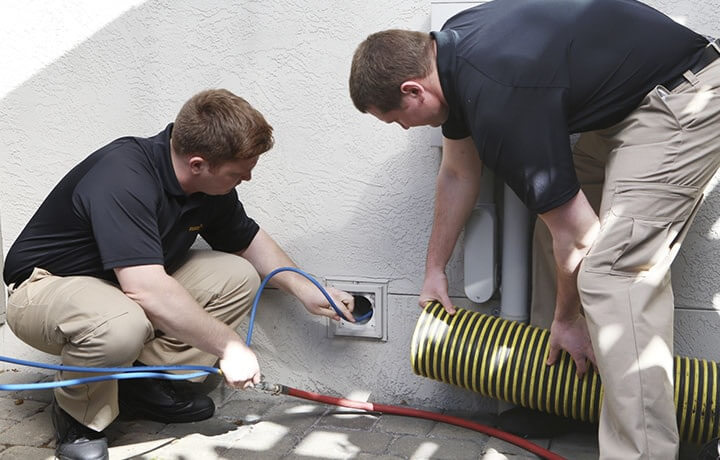Now that you've chosen a professional to clean your air ducts-preferably one with lots of experience and certified by the National Air Duct Cleaners Association (NADCA)-you may be wondering what the process will entail? Will this company is dragging lots of heavy equipment into your home? Will things need to be moved around? How long will the process take? These are good questions, and you'll find the answers below.
First Measure: Assessment
A NADCA-certified specialist will first need to have a fantastic look in your ducts and HVAC method to appraise the sort of cleaning needed. This could involve removing port covers, including a camera or a mirror, and sometimes even sampling debris or build-up from the ducts. What he sees will count on the life span of the people of your house (including undesirable inhabitants like rodents), in addition to the condition of the ducts and HVAC system. If you want duct cleaning service in Brooklin then you can search over the internet.

Image Source: Google
By way of instance, layered pollutants and debris might demand alkaline cleaning agents, mold may demand a unique remediation routine and EPA-registered cleansing agents, and dust might require just vacuuming and scrubbing. Your air duct cleaning specialist should be able to clarify what he discovered and how he intends to wash it.
Cleaning Gear
Broadly, the gear needed to clean your air ducts shouldn't inflict too heavily in your living or work area. Most firms use gas or trucks powered vacuums vented out to power such tools. Clearing a pathway into your air vents is probably all of the adjustments required to get ready for cleaning.
In case the test turns up or existing moisture, and also the skilled suspect's mold or bacteria, the air duct cleaning firm may also carry gear to collect samples (samples of the debris and/or of the atmosphere on the ducts) for laboratory analysis. If laboratory analysis is necessary, cleaning might be postponed until the kind of contaminant and proper cleaning agent are decided.
